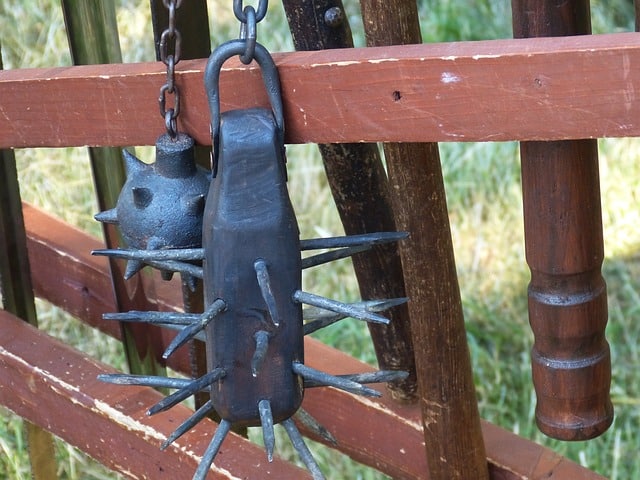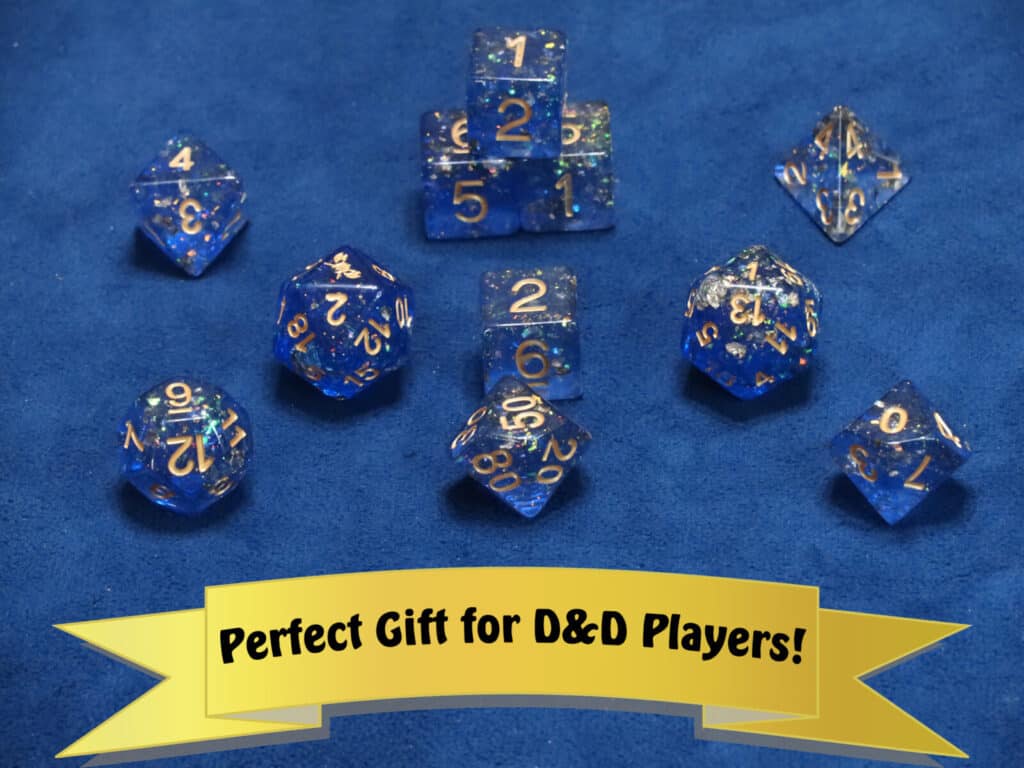The piercer feat is actually a bit more versatile than some of the other similar feats in Tasha’s that focus on a specific damage type based on weapons. While at first glance it’s a bit easy to dismiss this one as seeming a bit underpowered, and for some classes it is a feat that won’t make a lot of sense. However, for those classes that the piercer feat does make sense for, this is a surprisingly powerful boost to a character build…especially at higher levels.
The Piercer Feat in 5E Dungeons & Dragons is an excellent feat for niche classes using weapons that inflict melee or ranged piercing damage. Players agree that rogues, rangers, and fighters should frequently invest in this feat to consistently increase their damage levels, especially on critical hits.
So how does the Piercer Feat actually hold up in 5th Edition games? When does it shine and when does it just fall flat? We’ve got the full breakdown in this feat guide!

Breaking Down the 5E Piercer Feat
We can’t do a full breakdown of the feat without first seeing the details directly from Tasha’s.
The Piercer Feat 5E straight from Tasha’s Cauldron of Everything:
You have achieved a penetrating precision in combat, granting you the following benefits:
- Increase your Strength or Dexterity by 1, to maximum of 20.
- Once per turn, when you hit a creature with an attack that deals piercing damage, you can reroll one of the attack’s damage dice, and you must use the new roll.
- When you score a critical hit that deals piercing damage to a creature, you can roll one additional damage die when determining the extra piercing damage the target takes.
Tasha’s Cauldron of Everything, p.80
So without any further wait, let’s dive into the benefits of the 5E Piercer feat and see how they hold up.
Benefit #1: Increase your strength of dexterity by 1 to a maximum of 20.
I do like the trend in Tasha’s where feats allow an either/or when it comes to a +1 ability score. This definitely makes it more valuable and considering that many piercing weapons are DEX based while a few melee choices are clearly STR based, it’s a winning decision to make this an either/or.
Solid, but once again, when giving up an ability score increase for a feat, the benefit of this is dulled a little bit as it is more of a buffer against the ability score that is lost from taking a feat, but it works well if the other benefits are strong.
Benefit #2: Once per turn when an attack hits with piercing damage, you can reroll one of the attack’s damage dice, then you must use the new roll.
I don’t like the fact that you must use the new roll, but I understand it. If it was choose either/or, this would actually become one of the strongest feats in the entire game. On paper, this isn’t overly powerful because when you have a strong or average roll, you won’t use it that often. At least at low levels with most melee builds.
However, there is some math that argues this is stronger than it looks and three situational builds in particular where this feat starts making a lot of sense. Especially as they move to higher levels.
The math on re-rolls for the Piercer Feat:
- You’d never re-roll a 4, 5, or 6 if you’re following the math.
- If you re-roll a 3 you have a 33.4% chance of a worse roll, 16.7% chance of staying the same, and a 50.1% chance of a better roll
- If you re-roll a 2 you have a 16.7% chance of a worse roll, 16.7% chance of staying the same, and 66.8% chance of a better roll
- If you re-roll a 1 you have a 0% chance of a worse roll, 16.7% chance of staying the same and 83.3% chance of a better roll
So when you’re rolling one die this doesn’t look great. It does rise the basement which is always good, but when you add in additional dice the chances of some low dice rise, which makes this more
Benefit #3: When you crit with a piercing weapon you may add one additional damage die with the piercing damage.
An extra damage dice is a nice little bonus, especially for the classes that have an expanded crit range (Champion Fighter, Hexblade Warlock, 20th Level Oath of Conquest Paladin, Barbarian/Fighter mix). When you have a 10% chance at crit instead of 5%, that can add up to a lot of dice over a campaign.
Especially for the barb/fighter combos designed to use reckless attack so they attack with advantage.
Extra damage is always a great benefit when you get it, but it’s important to note that extra die does NOT get doubled when that critical is figured up. This has been confirmed by Jeremy Crawford via Twitter.
Weapons that inflict piercing damage:
- Dagger – 1d4
- Dart – 1d4
- Javelin – 1d6
- Spear – 1d6
- Shortsword – 1d6
- Trident – 1d6
- Shortbow – 1d6
- Hand crossbow – 1d6
- Rapier – 1d8
- War Pick – 1d8
- Morningstar – 1d8
- Longbow – 1d8
- Heavy crossbow – 1d10
- Pike – 1d10
- Lance – 1d12

5E Classes That Should Take the Piercer Feat
When looking at the weapons a few thoughts come to mind to the experienced player, and those thoughts are generally confirmed. There are three classes that should leap to mind as great fits with the piercer feat: the rogue, the fighter, and the ranger.
Rogues should take the piercer feat in 5E. Rogues already have limited weapons they can use due to the requirement of finesse weapons for sneak attack. They tend to start with daggers and a hand crossbow and move up to rapiers for the maximum damage finesse weapon they’re allowed to wield.
Piercer is great for the rogue because of the re-roll of a low damage die. Since sneak attack is tied to the weapon, a piercing weapon with sneak attack means all those sneak attack dice count as piercing damage, which means any 1 or 2 rolled among those is eligible for a re-roll. That means you will be frequently able to add more damage to your attacks by re-rolling the lowest die.
At high levels when rolling 10 plus dice, you’ll almost certainly have a one to re-roll.
Rangers should also take the piercer feat. This 5E feat is not limited to melee, which means every one of those arrows the ranger shoots is going to be piercing damage. So is the d6 with Hunter’s Mark. So is the d8 with Colossus Slayer. Meaning there will be many occasions where a 1 or 2 will roll and the ranger can re-roll that die, making them even more effective.
Fighters should also take the piercer feat. For a distance melee fighter (i.e. the fighter archer build) this is an obvious choice, especially as writers get more and more attacks per turn. For melee fighters it is important to choose the weapons that do piercing damage…but since the morning star and war pick are pretty fun and paint an image, that shouldn’t be a problem.
These are the classes that can consistently make the most out of the piercer feat.
5th Ed Classes that should always take the Piercer Feat:
- Rogues
- Rangers
- Fighters
5E Classes That Should Consider Taking the Piercer Feat
There are other classes where, depending on the build, they might also consider the piercer feat. There are multiple weapons that give a different type of damage or more damage, or others who like using two hands, so the weapon choice could disqualify some builds.
However, if a barbarian was to take a morning star or war pick over an ax, if the paladin gave up the war hammer, the cleric surrounded by spirit guardians gave up the two handed weapon, if they all forsook the long sword, then maybe.
Maybe in those situations it’s worth it for the barbarian, cleric, or paladin to at least consider the piercer feat, since the extra damage during crits or re-rolls definitely comes in handy.
5th Ed Classes that should consider taking the Piercer Feat:
- Barbarians
- Clerics
- Paladins
5E Classes That Should Almost NEVER Take the Piercer Feat
If you’re not an archer or getting up close and personal with piercing weapons, then this feat doesn’t make sense. These are classes that just aren’t designed for that type of up and close personal combat, or they are designed to do so in a way that is not going to focus on the right type of weapon for the feat.
While piercer is a great feat for the classes that are built to use these weapons, it won’t be for everyone. For magic users and monks, it just doesn’t make a lot of sense as a feat.
These classes have much better uses of their ability score improvement level ups, and like the other feats from Tasha’s built around weapons, if they’re not using those weapons, the feat doesn’t do any good.
5th Ed classes that should almost never take the Piercer Feat:
- Artificers
- Bards
- Druids
- Monks
- Sorcerers
- Warlocks
- Wizards
Final Feat Grade for 5E Piercer Feat
Piercer 5E Feat Grade: B+
Is the Piercer Feat Worth It In 5th Edition D&D?
While it is possible to build some characters around this feat, there’s little denying that it is weaker than the crusher feat although if you have a hot hand at rolling dice that might not matter so much. The piercer feat allows one player with weapons to go nuts and for players who throw a LOT of dice with their piercing attacks, this is a great feat that will pull its weight a lot.
Rogues should always grab this feat while most rangers and fighters will also find it doing serious work for them. For these classes that use these particular weapons, piercer is an A-level feat.
But since it is narrow, and has times when its benefits don’t kick into effect, it gets a rock solid B+ grade. Piercer is a good feat, but it’s not top tier.

Piercer 5E Feat FAQ
Does the Piercer Feat work with Hunter’s Mark in 5E?
Piercer applies to any Hunter’s Mark spell as long as the damage applied comes from a weapon that causes piercing damage. So for damage done by a longbow, hunter’s mark does count as piercing damage and thus that damage die can be re-rolled under the piercer feat’s rules.
Does the Piercer Feat work with sneak attack in 5E?
The piercer feat absolutely applies to sneak attack damage as long as the damage is done by dagger, rapier, or other finesse weapon that causes piercing damage. This means that every damage die rolled on a sneak attack falls under the piercer feat.
Do you need to use finesse weapons to use the Piercer feat?
No, you don’t need to use a finesse weapon to use the piercer feat, simply a weapon that causes piercing damage.
Other DnD Articles You Might Enjoy


Proud to embrace the locally created moniker of “Corrupt Overlord” from one of the all time great Lords of Waterdeep runs, Shane is one member of the Assorted Meeples crew and will be hard at work creating awesome content for the website. He is a long-time player of board games, one time semi-professional poker player, and tends to run to the quirky or RPG side of things when it comes to playing video games. He loves tabletop roleplaying systems like Dungeons & Dragons, Pathfinder, Werewolf, Fate, and others, and not only has been a player but has run games as DM for years. You can find his other work in publications like Level Skip or Hobby Lark.
